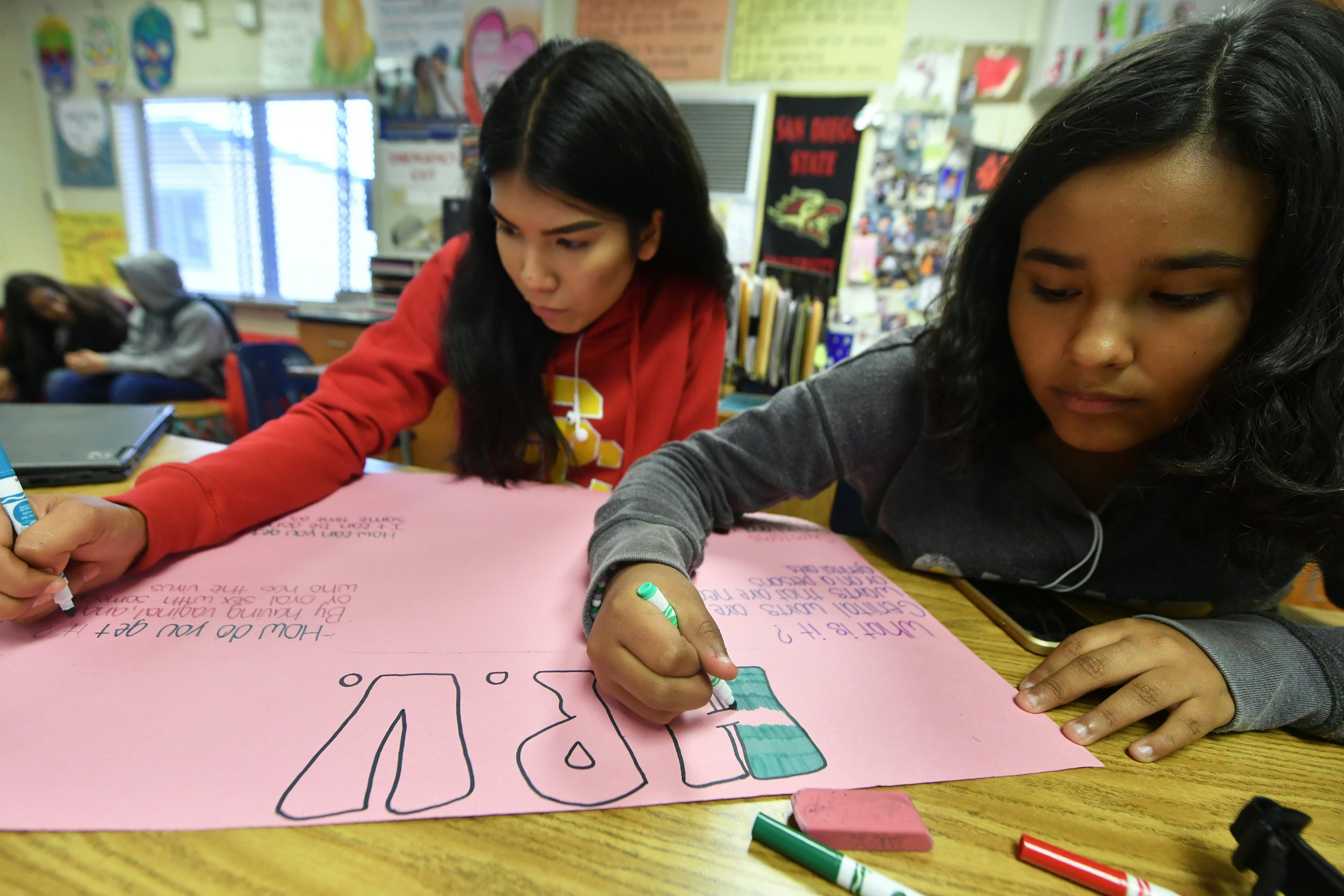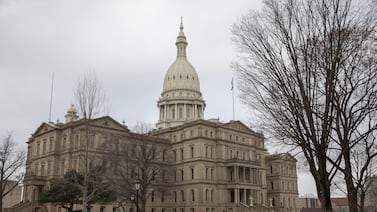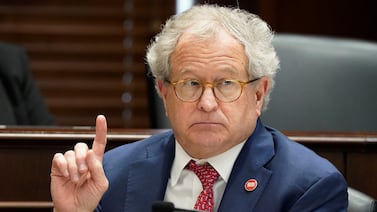Sign up for Chalkbeat’s free weekly newsletter to keep up with how education is changing across the U.S.
For decades, transgender teens rarely saw themselves reflected in lessons about sexual health.
That’s a problem, youth advocates say, because trans youth really need accurate information: They’re at a higher risk of contracting sexually transmitted infections and experiencing intimate partner violence.
In recent years, some health educators have worked to make sex education more inclusive of various gender identities. That could mean using gender-neutral language or incorporating trans people into the scenarios students learn about.
But the Trump administration, which supports the view that there are only two sexes, male and female, wants to put a stop to that.
On June 20, the U.S. Department of Health and Human Services told California that the state must remove all mentions of gender identity and trans people from the materials used in its federally funded sex ed program. Known as the Personal Responsibility Education Program, or PREP, the program targets teens and pre-teens at high risk for pregnancy and sexually transmitted infections.
The materials cited by the Trump administration include “Rights, Respect, Responsibility,” “Making Proud Choices!” and “Teen Talk” for middle and high school. A spokesperson for Health Connected, the maker of “Teen Talk,” declined to comment on Tuesday. Advocates for Youth, the nonprofit behind “Rights, Respect, Responsibility” and ETR, the creator of “Making Proud Choices!” did not respond to requests for comment.
California has 60 days to comply, or it risks losing a $6 million-plus federal grant.
“California was not only in violation of PREP’s terms but using federal funds to promote radical gender ideology and expose children to inappropriate, irrelevant content,” a spokesperson for the Health and Human Services department told Chalkbeat in an email.
More states could face similar demands. The HHS spokesperson told Chalkbeat that the department is actively reviewing the materials used by all PREP grantees, a list that includes nearly every state. And at least 23 other states have used “Making Proud Choices!” in their federally funded sex ed programs.
PREP represents a relatively small slice of sex education happening across the country. But some worry it’s a slippery slope from demanding California make these changes to ordering schools to remove gender identity and trans people from any curriculum purchased with federal funds. Already the Trump administration is waging war with several states over their inclusion of trans girls on women’s sports teams and has threatened to withhold federal funds from schools that teach “gender ideology.”
Beth Deines, a spokesperson for California’s public health department, said the agency is still reviewing the Trump administration’s demands, but that the state’s PREP uses models that are effective and rooted in evidence. California’s instructional materials are medically accurate, comprehensive, and age-appropriate, Deines added, and were “federally pre-approved” prior to the Trump administration.
Advocates for LGBTQ youth, meanwhile, worry that potential changes to California’s curriculum could deprive trans youth of critical information for their physical and mental health and further ostracize them at a time when they’re being targeted on many fronts.
If California does strip out the references to gender identity, it would affect not only trans kids, but their classmates, too, said Lisa Andersen, a historian who co-authored the book “Touchy Subject,” which chronicles decades of debates over sex education in American schools.
“We need to create an environment in which the school helps the student flourish but also moves them toward being able to be a citizen in a diverse society, and I think it’s really hard to do that if you’re not acknowledging any particular group.” Andersen said. “It’s simply hurtful to write people out of the curriculum.”
Why the federal government funds sex education
Congress created the Personal Responsibility Education Program in 2010 as part of the Affordable Care Act. Federal officials awarded $41 million to states for the program over the most recent three-year funding cycle.
The program is designed to reach young people who are at a higher risk of getting pregnant or contracting a sexually transmitted infection. And a large-scale national evaluation found that PREP does successfully boost the share of young people who say they will use a condom or birth control if they’re sexually active.
California’s program educates 13,000 young people each year, state officials say. Its target audience includes teens experiencing homelessness, youth in foster care, alternative school students, teens in the juvenile justice system, and LGBTQ youth. In the state’s most recent data collection, 2.5% of participants identified as trans or nonbinary.
What complicates compliance with the Trump administration’s demand is that stripping out references to gender identity and trans youth would contradict California’s sex education law, which requires public schools to use materials that teach about gender identity and gender expression. Some California schools use the same texts that were singled out by the Trump administration last month. And advocates for inclusive curriculum say it’s not as simple as making a few edits, because this instruction is woven into all the lessons.
A spokesperson for California Attorney General Rob Bonta said the office continues to review all of the president’s actions for compliance with the law, but said the office could not comment on any potential litigation. A California Department of Education spokesperson did not respond to a request for comment.
The Trump administration said at first it decided to conduct a medical accuracy review of California’s PREP curriculum. But federal health officials changed course, they said, when they spotted “gender ideology” in the materials, which they said falls outside the scope of the law governing PREP.
The law is silent on whether programs should teach about gender identity. But it includes other language that says the instruction should be presented in the appropriate cultural context for target audiences, which include “culturally under-represented youth populations.”
The language flagged by the Trump administration in the materials and teaching guides includes several explanations of gender identity and what it means to be transgender. Some examples include:
- “All people have a gender identity. An adjective used to describe a person whose gender identity is incongruent with (or does not ‘match’) the biological sex they were assigned at birth is ‘transgender.’ … Other gender identities may include non-binary, agender, bigender, genderfluid, and genderqueer.”
- “Gender identity is your inner sense of your gender—Do you feel like a guy? Do you feel like a girl? Do you feel like something different than a guy or a girl? Often gender identity matches a person’s body— someone with a girl’s body feels like a girl on the inside or someone with a boy’s body feels like a boy on the inside—but not always. Transgender is when a person’s inner feelings about gender identity don’t match the body.”
Talking about gender identity and trans identity in sex education is still fairly new, dating back mostly to the 2000s, Andersen found in her research. That helps explain why there’s still healthy debate about how best to teach those topics, Andersen said.
But the current political climate is making it especially difficult for schools and health educators to navigate.
“We don’t have a long history of working this out,” she said. “And we’re trying to figure it out during perhaps the most politically volatile period we’ve had in the last 100 years where we’re primed and ready to disagree with each other.”
This story was updated to reflect that the three curriculum makers for PREP in California declined or did not respond to requests for comment.
Kalyn Belsha is a senior national education reporter based in Chicago. Contact her at kbelsha@chalkbeat.org.






